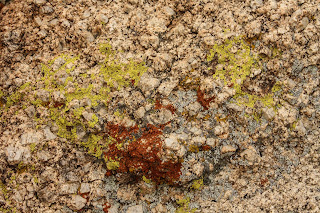The first plants to appear on Planet Earth
would have been single-celled true algae that developed about 1500 million
years ago (mya).
However, life on Earth goes back a lot
further than that, with bacteria and blue-green algae (cyanobacteria) emerging
about 3500 mya. Blue-green algae must be reckoned as the ancestors of plants
because they were able to photosynthesise and produce oxygen which in turn
enabled more complex lifeforms to develop.
The first multi-celled plants appeared
about 550 mya. These would have included simple seaweeds.
Lichens, which combine algae and fungi,
were among the first land plants. They grew on rocks which they eroded to
create soil in which later plants would develop.
Bryophytes appeared about 400 mya. These are
mosses and liverworts which are seedless and stemless plants that cannot grow
to any height but form mats of vegetation. Liverworts grow by using nitrogen
that is trapped from the air by the blue-green algae on which liverworts form.
Gymnosperms, which are seed-producing
non-flowering plants such as conifers and cycads, appeared around 300 mya with
angiosperms (flowering plants) developing over millions of years to produce the
first true flowering plant around 160 mya.
© John Welford

No comments:
Post a Comment